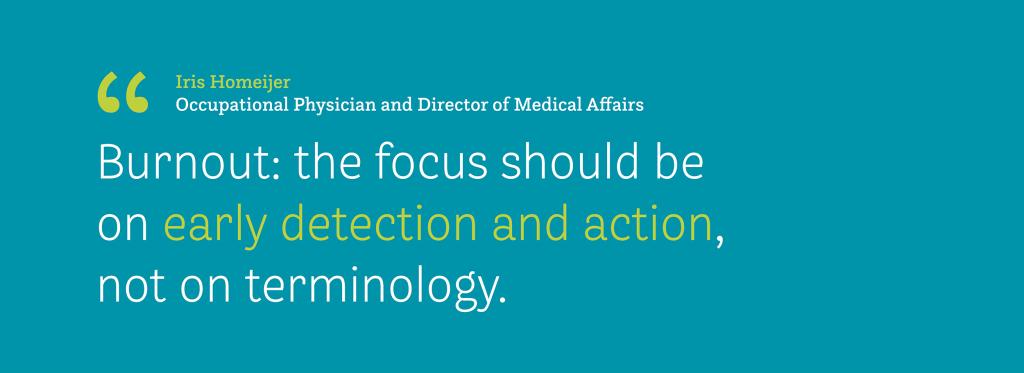Scrapping the term burnout will not solve mental health issues for the Dutch workforce

That is not the key to the solution, according to occupational health and safety services ArboNed and HumanCapitalCare, both part of HumanTotalCare and jointly serving around one million employees. “It’s not about the terminology, but about how we deal with stress and excessive workload at work. The focus should be on early detection and taking effective action, because the symptoms are real and cause long-term absenteeism,” emphasises Iris Homeijer, Occupational Physician and Director of Medical Affairs at HumanCapitalCare.
Burnout is an umbrella term
“Burnout has become a popular umbrella term for all kinds of stress-related symptoms,” says Homeijer. It is often a combination of symptoms. There is no single medical definition, and interpretations differ from one healthcare professional to another. “As occupational physicians, we look at the build-up in severity and duration of the stress-related symptoms. We distinguish between mild symptoms of stress and more severe emotional exhaustion and burnout. Burnout is marked by fatigue and exhaustion, with symptoms that have persisted for at least six months. You can also see that build-up reflected in absence levels. In 2024, workers with stress-related symptoms were away from work for an average of 250 days. With burnout, that actually went up to 318 days – over a ten month period.”
From diagnosis to a sustainable approach
Figures from ArboNed and HumanCapitalCare show that long-term absence due to stress-related symptoms has increased by 35% over the past five years. Nowadays, one in four sick days is caused by stress. Homeijer: “Whether professionals continue to use the term burnout or not does not change the fact that these symptoms exist. People often carry it around with them for months before taking sick leave. This is regrettable, because early detection and relatively minor adjustments can actually help prevent a lot.” According to Homeijer, there is a major opportunity to improve by investing in resilience and ensuring that symptoms are discussed at an early stage. “Employers and employees play a key role here. A safe work environment where colleagues look out for each other and where indicators can be discussed really makes a difference.”
Analysing causes to find the right approach
In order to provide the right approach to care and guidance for symptoms, it is essential to conduct a proper analysis of the symptoms and their causes. “If symptoms are affecting work, that does not necessarily mean that work is the cause. To find the right approach, it is important to look at the underlying causes of the symptoms. This is why occupational physicians take a broader perspective. Who is the person, what is going on in their private lives, what is happening at work, and so on. You can only decide on the right approach once you know the cause.”
Identifying stress at an early stage
To ensure that employers and employees are able to identify and address stress indicators in good time, HumanTotalCare is working with Amsterdam UMC and other partners on the DESTRESS programme. This initiative is focused on reducing stress and increasing resilience in employees and organisations. The focus is on identifying and addressing stress indicators at an early stage and having employees and employers engage in constructive discussions.